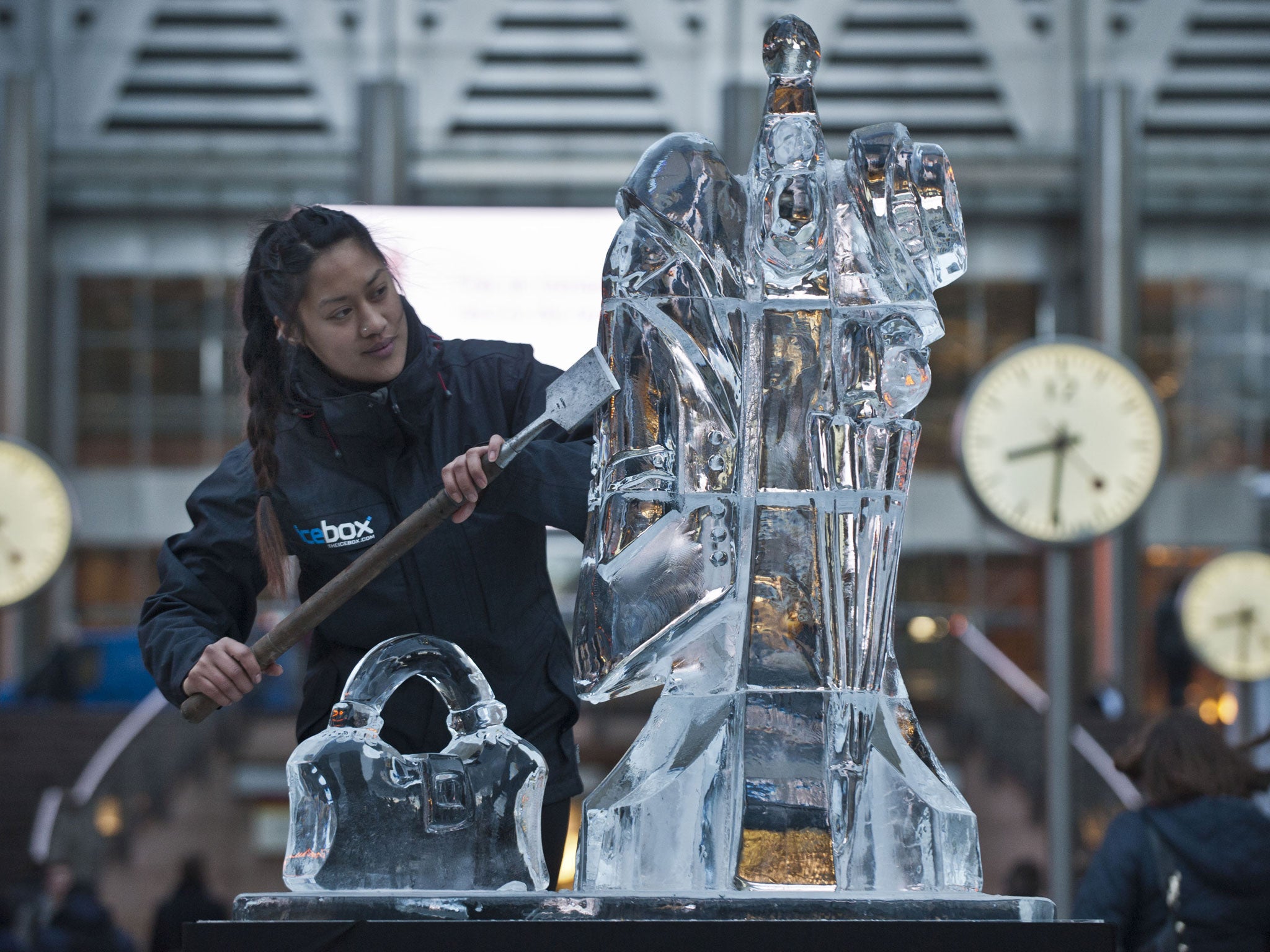The art of ice sculpting
Frozen water isn't just good for gin and tonic. It's also a medium for artists to show off their fine sculpting skills. Jamie Merrill chills out at London's coolest competition

Anne-Marie Taberdo has a cold few days ahead of her as the leader of the British team at the London Ice Sculpting Festival. This afternoon, she'll wrap up warm, fire up her electric chainsaw, scale a ladder and start work on a frozen masterpiece out of a two-tonne block of ice.
Taberdo's design for the competition is a closely guarded secret – she'll say only that it's "very British" and partly inspired by Downton Abbey – but she hopes that it will be "spectacular" enough to triumph over the other 20 international ice sculptors competing in the heart of the usually sombre Canary Wharf financial district.
The competition is in its sixth year and the 27-year-old is just one of the dozens of artists who make a living from the booming popularity of ice sculpture. As with many rivals, she began as a traditional sculptor, in her case at the British Museum, before switching to ice. She is now head sculptor for Ice Box London, which charges up to £350 for an ice vodka luge for weddings.
These luges have been popular in glossy wedding magazines for years and, according to Taberdo, are not going out of fashion any time soon. Though, she says, the world of commercial ice sculptures isn't just about "garish boobs" on flamboyant ice vodka luges. "The luges are part and parcel of the business, but many of them are far more bespoke and creative," Taberdo says.
The luges may be helping to fuel the frozen sculpture boom, but the focus at this weekend's festival is definitely on the more artistic side of the discipline, and the British team will be hoping for a chill snap as members start with chainsaws before moving on to saws and various blades for detailed work. "Ice is so unique to work with compared with wood or stone," Taberdo says. "Apart from the obvious beauty, there's a real intimacy in working with it. And if you make a bad one, it's gone by tomorrow."
The festival uses great slabs of man-made ice shipped in from a special factory in Belgium. It's not a simple matter of sticking giant ice trays into industrial-sized freezers, though; all the oxygen has to be removed to stop chunks of ice flying off when the artists attack it. Nonetheless, such man-made ice doesn't come up to scratch for ice-sculpture purists such as Ben Rousseau, a designer who has worked with the Ice Hotel in Sweden's Arctic Circle and the Ice Bar on Regent Street in central London. Rousseau is part of a small community of ice artists who work all over the world, and only uses ice hewn from the fast-flowing Torne River in Sweden. "Natural ice has a clarity that man-made ice doesn't, but the joy of working with any ice is that you can work with huge volumes and shape your work incredibly quickly," he says.
"I love the beautiful noises you make as you slice through it with an extremely sharp ice chisel – a sort of crisp, fine whooshing noise."
Carol Cordrey, the art critic who organises the free London festival, agrees that the sound is wonderful. "People come for the spectacle and are mesmerised by the sights and sounds of artists attacking huge slabs of ice with chainsaws," she says. "They just stand their agog."
When it comes to standing agog, it's the Chinese city of Harbin that leads the world of ice sculpture. This week 10,000 chilly workers used iron pikes to pull ice out of the frozen Songhua River for the 30th Harbin International Ice and Snow Festival so that up to million visitors could view replicas of Rome's Coliseum, temples from Asia and, more oddly, the Industrial and Commercial Bank of China building.
In Britain we're not replicating banks (yet) and the scale isn't as vast, but whatever the artists create, they can't stop their work from eventually disappearing. Rousseau is fine with that, though: "The beauty of working with ice is that it will melt, so you aren't that protective of it and are happy to see it change and alter over time."
Taberdo calls it "temporary art". She won't mind when her work melts and Canary Wharf is given back to the suits on Monday then.
Join our commenting forum
Join thought-provoking conversations, follow other Independent readers and see their replies
Comments